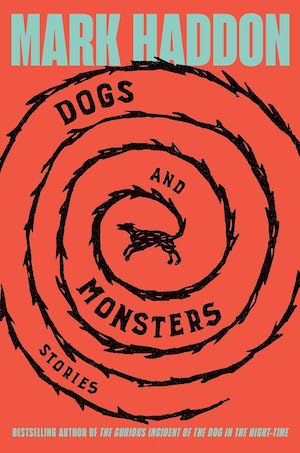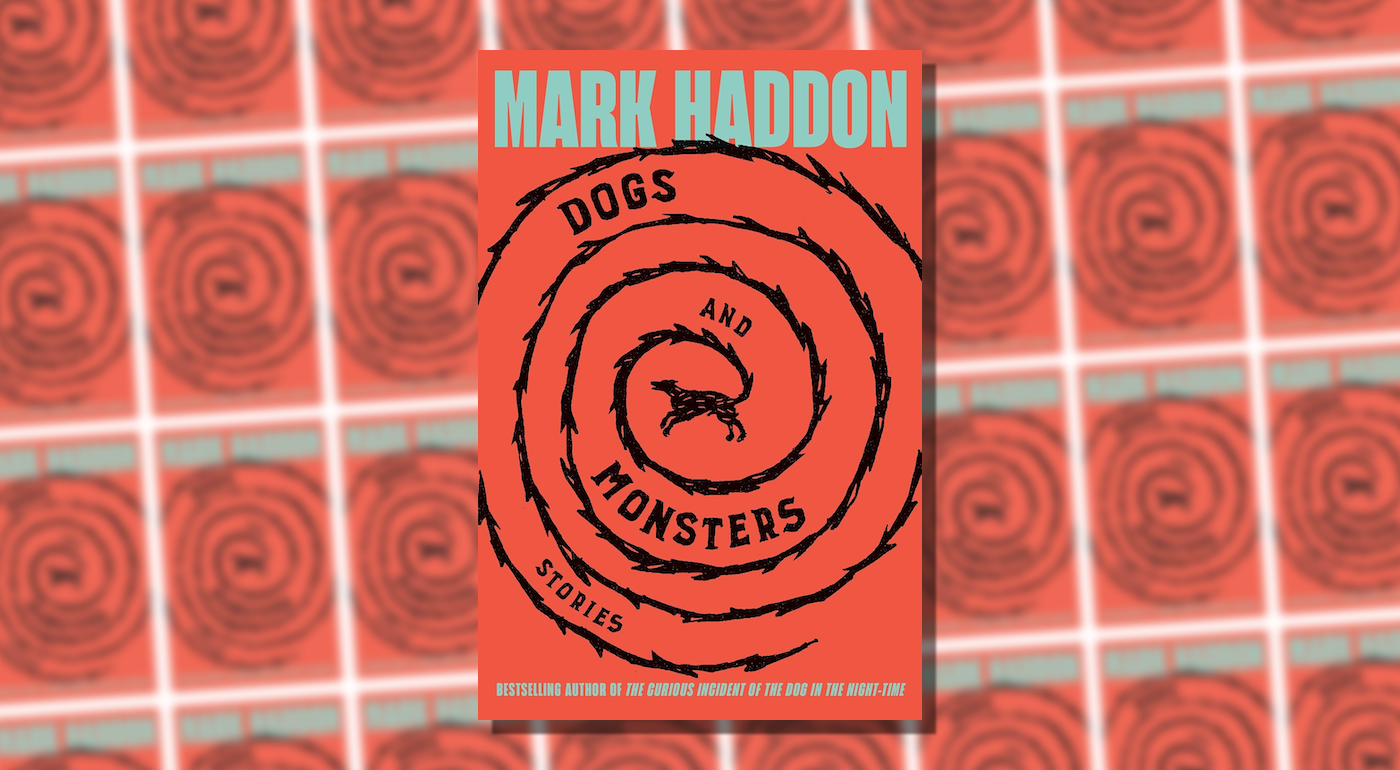What inspires a writer to look back centuries, if not more, for inspiration? In the case of Mark Haddon, the impetus that led to his new collection Dogs and Monsters was at least somewhat therapeutic. In an essay for The Guardian published earlier this year, he describes writing two of the stories that would wind up in this book as he recovered from heart surgery. The whole essay is unnerving stuff, and it makes the origin story of these stories especially compelling in its own right. But it also raises another question: Is the collection as a whole worth picking up?
The short answer is yes; the longer answer comes in the form of this review. Many of these stories revisit myths and legends, though they also provide something of a showcase for Haddon’s authorial range. Some of the works contained within apply deft psychological analysis to figures previously sketched in the broadest of strokes, but that’s not all Haddon is up to here; one of the stories takes on a more overtly metafictional approach, reading at times less like a short story and more like a freeform essay analyzing the resonance of one especially harrowing Greek myth.
Not every story in this collection overtly echoes the mythic; some don’t even venture into the realm of the supernatural. “My Old School,” one of the strongest stories here, is largely set in 1976, when its narrator is an eleven-year-old boarding school student, doing his best to navigate the fraught social circles and hostile classmates around him.
That this will not be a warm and cozy trip into memory is clear from the story’s early pages, when the narrator compares his experience there to his time visiting prisons as an adult:
[…] the acoustic of a building without carpets or furniture, the reek of sweat and flatulence and cheap deodorant, and something less palpable, a prickly tangle of pecking orders and unwritten rules and invisible lines that must not be crossed.”
The narrator’s friendship with Meyer, another outsider, develops hesitatingly; eventually, there’s a betrayal with unsettling consequences. Had that been the end of things, it would have been emotionally wrenching enough, but instead Haddon follows his narrator decades later, as he attends a reunion and has an interaction that makes his own complicity in certain events far more ambiguous. Think of it as a ghost story with no actual ghosts, perhaps, or an account told by a narrator whose recollection of events is accurate but whose take on their morality is what’s unreliable.
Buy the Book

Dogs and Monsters
That sense of reliability also comes up in “The Bunker,” about a woman named Nadine who appears to be leaping between two different versions of reality. “The street was full of people running, shouting, crying,” Haddon writes. “She recognised none of the buildings. She had never been here before.” While the idea of a protagonist caught between two incompatible versions of reality isn’t new, Haddon does excel at making Nadine’s disorientation palpable, leading to an especially unsettling finale.
Haddon isn’t always coy when it comes to his inspirations here; the story “D.O.G.Z.” begins with an epigraph from Ovid’s Metamorphoses that recounts the story of the hunter Actaeon, who glimpsed the goddess Artemis as she bathed and was transformed into a deer as punishment. In this form, he ended up being attacked and devoured by the pack of dogs he’d used to hunt—all events that Haddon describes in the story.
He doesn’t stop there, however. Instead, he seeks to make a larger argument about this as a transformational moment in the relationship between dogs and humans, a betrayal that would be echoed and reversed over the centuries to come. It’s an ambitious work, with a bit of Angela Carter in its DNA, and it also includes another running theme sound in this collection. Here, Haddon explores the way that the story of Actaeon itself becomes transformed and fractured:
He was killed and torn apart by wild animals (but why was no body found?). His friends murdered him (but they had no motive). He ran away and is now living under a new name (but how can someone whom we loved so much love us so little?). He was abducted by a god (there is some soothing flattery in this preposterous possibility)…
In the collection’s first story, “The Mother’s Story,” Haddon zeroes in on the way that stories themselves can accrue power. The narrator of this story is, indeed, a mother, specifically of a boy she loves who is named Paul. Paul’s father, however, is horrified by the child, calling him “a repellent chimaera, part human, part ape, part God alone knows what.” He summons an engineer to build a vast chamber below the palace where the child will be kept; it’s at this point that it becomes clear that Haddon is retelling the story of the Minotaur, albeit with the supernatural elements minimized, if not absent altogether.
“I believe it is entirely possible that all the wildness and damage were the results of his being treated like an animal,” the narrator muses about her son, and there seems to be plenty of reckoning with the ways that otherness can become “monstrousness” to the wrong eyes. (This story would fit nicely on a reading list beside Maria Dahvana Headley’s The Mere Wife.) But there’s also an unsettling quality to the engineer’s deception here: using stories to create a perception of fear that goes on to make those stories stronger.
Elsewhere in the collection, Haddon is content to reckon with grander themes without the more metatextual elements. “The Quiet Limit of the World” is a retelling of the story of Tithonus, who was granted eternal life without eternal youth, and who makes his way from the ancient world to the modern day while aging very, very slowly. This story feels like a synecdoche for Dogs and Monsters as a whole, as it encompasses both the folkloric and the tactile in the span of a single story.
With its musings on health and mortality, it takes on an added dimension once you know of the circumstances that led Haddon to write it. Dogs and Monsters is at times a little too ambitious for its own good; I found myself admiring some stories more than I fell under their spell. But at its best it finds the compelling inner lives of characters whose deeds have been talked about for millennia, and that’s an impressive feat on its own.
Dogs and Monsters is published by Doubleday.
